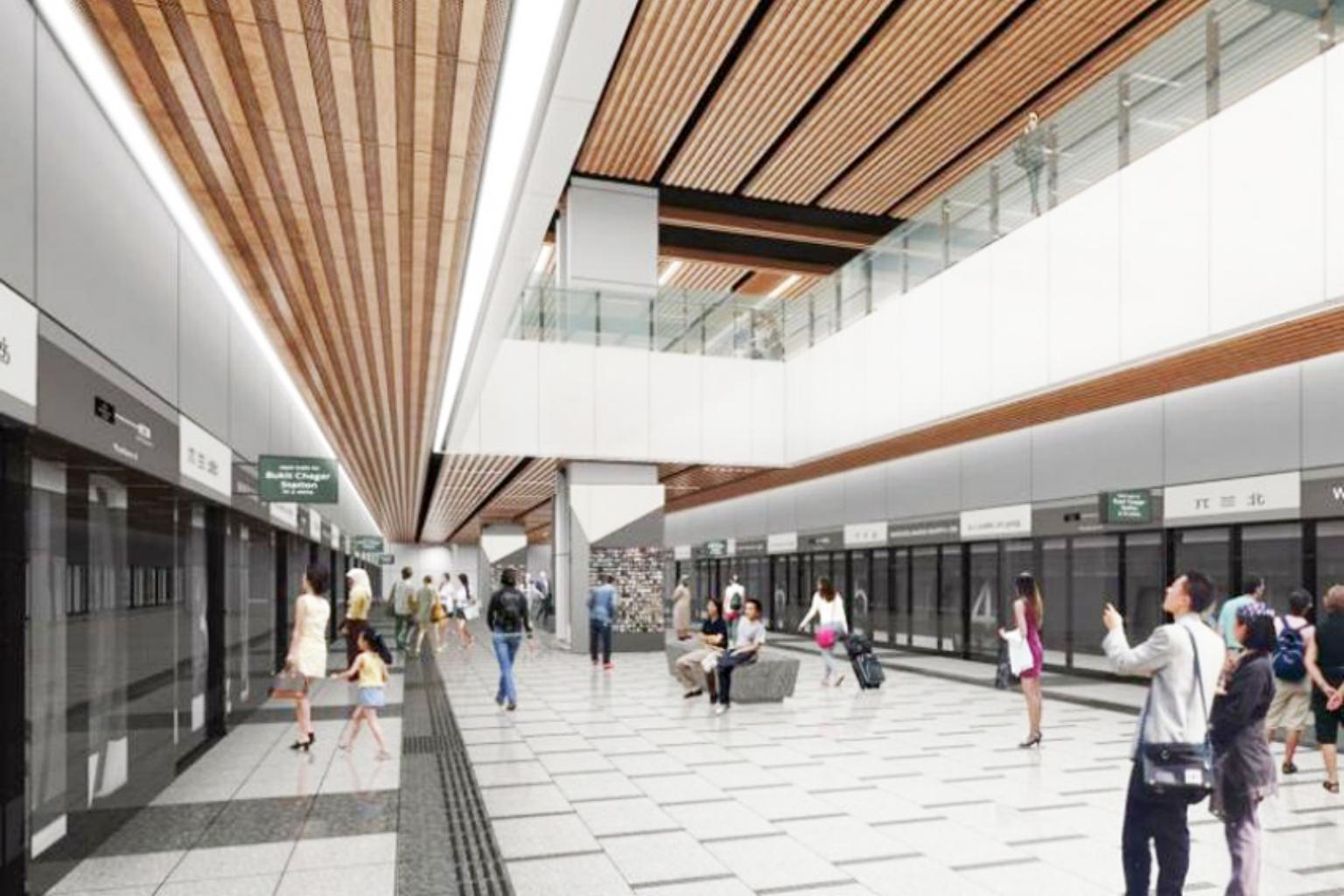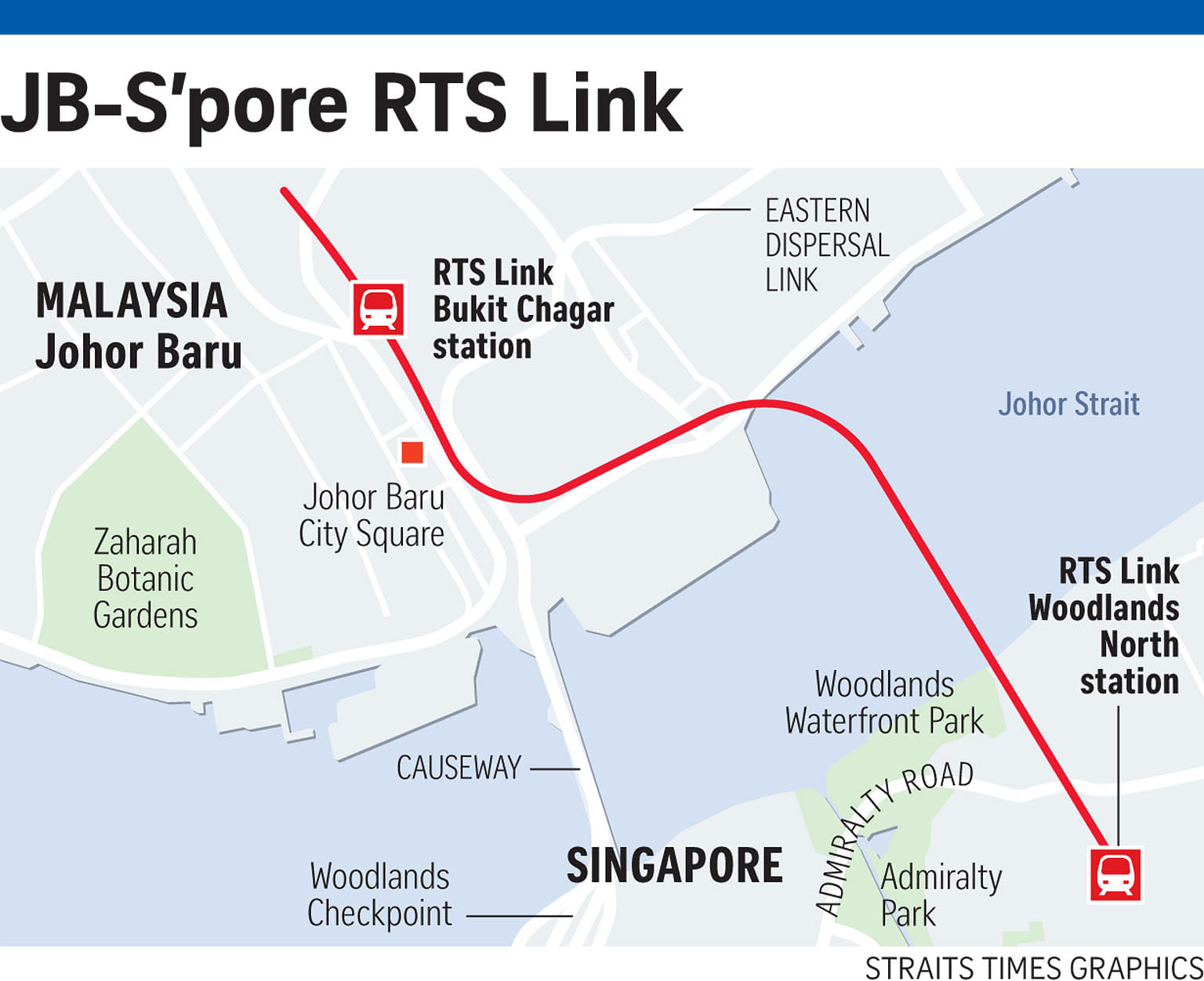LRT system for RTS Link might cost less even with new depot: Experts
Sign up now: Get ST's newsletters delivered to your inbox

An artist's impression of Woodlands North station, to be connected to Johor Baru by the Rapid Transit System Link.
PHOTO: LTA
Follow topic:
The move to switch to a Light Rapid Transit (LRT) system for the cross-border link between Singapore and Malaysia was made to save on costs, even after factoring in the building of a new train depot in Malaysia, said transport experts.
In officially resuming the Johor Baru-Singapore Rapid Transit System (RTS) Link yesterday, both countries had announced it would adopt an LRT system instead of using the same trains and rail systems as Singapore's Thomson-East Coast MRT Line (TEL).
National University of Singapore (NUS) transport researcher Lee Der-Horng said the most significant difference between Malaysia's LRT system and the TEL is the rolling stock, or type of train, used.
He said: "Even though building a new depot adds to the cost of the project, the cost saving from the smaller trains could compensate for the expense, and the operation cost can also be less."
Both countries had announced that the RTS Link will no longer use the existing TEL Mandai Depot, with a new depot to be built in Wadi Hana, Johor Baru.
A Singapore Ministry of Transport (MOT) spokesman yesterday said the LRT system will be similar to a medium-capacity MRT line in Singapore, like the upcoming Jurong Region Line.
She added that based on the LRT system's maximum capacity of 10,000 passengers an hour in each direction - the same as the TEL system - the frequency of trains could be between four and six minutes. A one-way journey will take about five minutes.
She also confirmed that there will be no light maintenance facility in Bukit Chagar as was initially planned, or in Singapore.
Singapore Management University transport economist Terence Fan noted that an MRT system is more costly in terms of initial investment and the total operating cost per year.
However, Singapore University of Social Sciences transport researcher Park Byung Joon made the point that Malaysia's LRT system was not the best way to deal with a high volume of people.
"If the demand remains low, such as a few thousand commuters a day, then the LRT system is the wiser choice," he said.
"If the expected volume hits close to the maximum capacity every day, then there might be a concern that the overall cost might go up due to wear and tear."
The cost of the project was a key reason for its delay. Last November, Malaysia proposed amending the scope and structure of the project to cut costs by 36 per cent.
The experts agree that having the depot in Malaysia instead of Singapore would mean lower costs, including land acquisition and labour costs.
Professor Lee said having a new depot in Wadi Hana could be the most feasible solution. As the RTS Link will have different rolling stock from the TEL, the operation system would be incompatible with it in terms of the signalling and power systems, he said.
In terms of commuter experience, Assistant Professor Raymond Ong from NUS said some people might have the misconception that the LRT system the RTS will use is similar to the Bukit Panjang LRT, which is much smaller than the MRT and has been saddled with reliability issues.

The LRT used in the RTS Link should be similar to the LRT system used in the Ampang Line in Klang Valley, said Prof Ong. This has a similar capacity to the Thomson-East Coast Line, but runs at a slower speed.
The line is now slated to begin operating by end-2026, instead of by the end of 2024.

